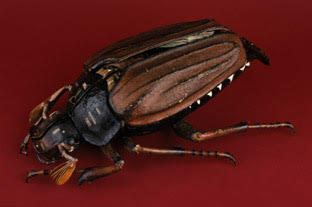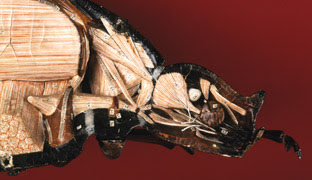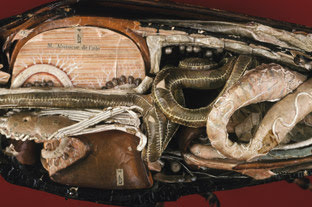Auzoux's choice of animals
Auzoux developed his line of animal models after a suggestion from the French Academy of Medicine. He followed Cuvier's examples in choosing certain species to represent larger classes of animals. He chose a May beetle to represent insects, a sea bream for fish and a leech for segmented worms (annelids).
Auzoux wrote a textbook aimed at a general audience, comparing human anatomy and physiology to that of other animals. As in his models, Auzoux's book used Cuvier's system of classifying animals and represented the classes using certain specific examples.
Explaining how a body functions
Auzoux also adopted Cuvier's 'functional' approach to explain anatomical features in animals and humans. The textbook described how each higher function of the creature (such as breathing, digestion or circulation) had to develop from more basic ones. For example, digestion requires a breathing system, which in turn requires the existence of a circulation, and so on.
The Auzoux company produced separate enlarged models to compare, for example, the nervous systems or circulatory systems of different classes of animals.
Anna Maerker
Anna Maerker, 'Auzoux's animal models', Explore Whipple Collections, Whipple Museum of the History of Science, University of Cambridge, 2008.






